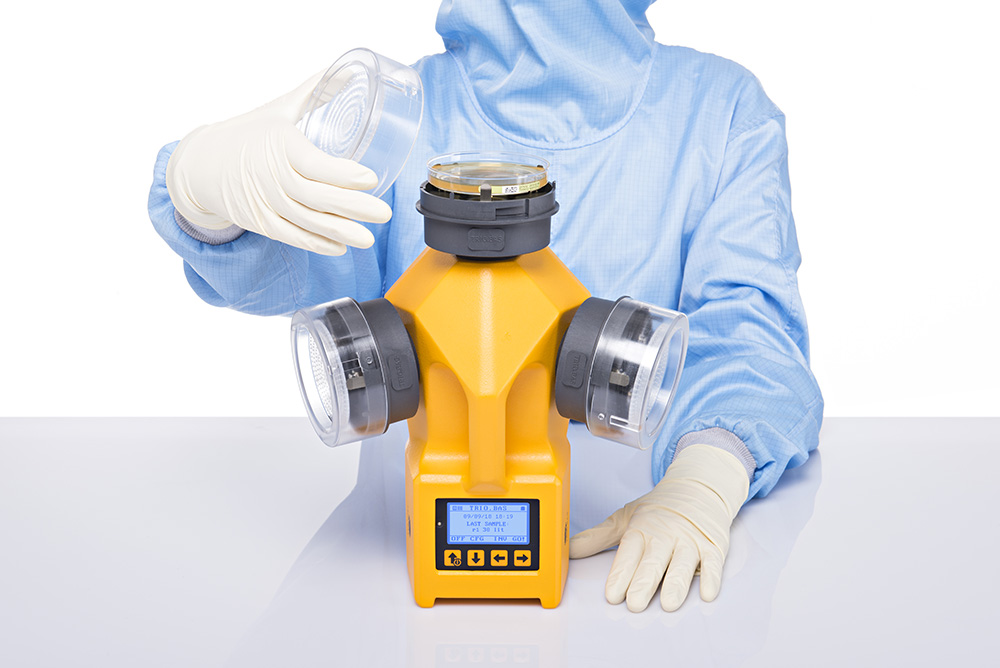In particular, the environmental matrices (water, air and surfaces) play a leading role as reservoirs of microorganisms. Through air sampling, it is possible to evaluate microbial contamination in environments at high risk of infection. Moreover, these controls can be used to check the efficiency of both the Conditioned and Controlled Ventilation System (CCVS) and the team’s hygiene procedures.
Microbiological air sampling in cleanrooms and other controlled environments usually requires the sampling of large volumes of air (at least 1 m3). It is also very important that samples are representative and the results of sampling accurate enough to ensure that the air meets regulatory standards, or guidelines from ISO 14689-1.
Microbiological air sampling of cleanrooms is carried out to ensure that levels of airborne microorganisms are within recognized international standards. There are two categories of air sampling; passive air sampling devices such as settle plates and active air sampling devices such as impact, impingement, and filtration..
In active monitoring a microbiological air sampler physically draws a known volume of air through or over a particle collection device which can be a liquid or a solid culture media or a nitrocellulose membrane and the quantity of microorganisms present is measured in CFU (colony forming units)/m3 of air.
Passive monitoring uses “settle plates”, which are standard Petri dishes containing culture media, which are exposed to the air for a given time in order to collect biological particles which “sediment” out and are then incubated. Results are expressed in CFU/plate/time or in CFU/m2/hour
Overall the microbiologist must look into the selection very carefully what is the purpose of the sampling, which should be to protect the products from microbic contamination by means of routine control of cleanroom, and to promptly intervene in case of values outside of alarm conditions. Therefore, the goal is the evaluation of bacterial contamination associated with airborne particles.
